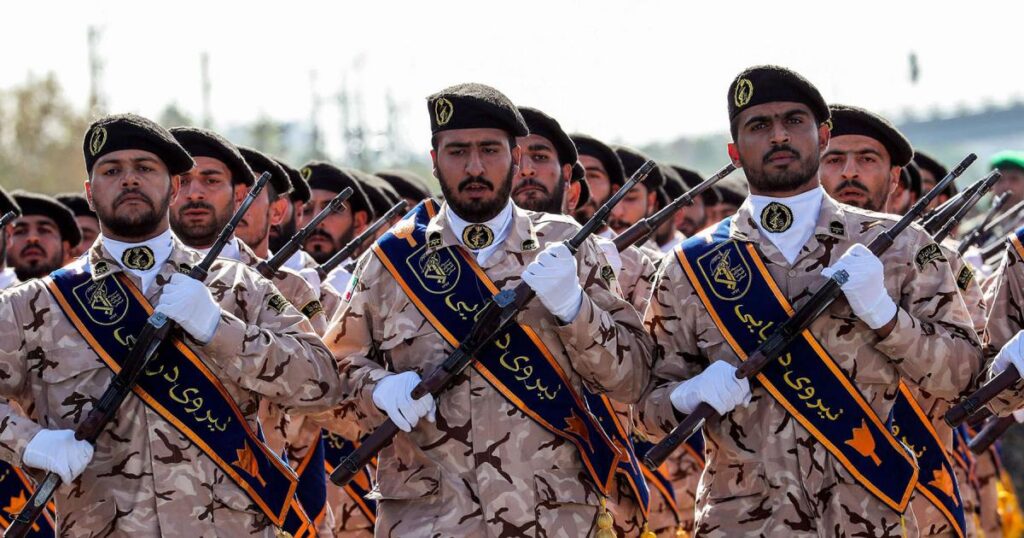WASHINGTON – The US military said on Tuesday that it had carried out a strike in Deir ez-Zor in Syria, targeting infrastructure facilities used by groups linked to the Iranian Revolutionary Guards, but Tehran was quick to deny any connection to those groups and at the same time condemned what it considered an American violation of Syria’s sovereignty. The strike came as the United States aims to respond to a draft agreement proposed by the European Union that would restore the 2015 nuclear deal with Iran, which former President Donald Trump abandoned and current President Joe Biden seeks to revive. The Army Central Command said in a statement that such strikes are aimed at protecting US forces from attacks by Iranian-backed groups. She cited one such incident on August 15 that involved a drone attack on a compound run by the coalition and US-backed Syrian opposition fighters, causing no casualties. “The president gave directions for this strike,” said Colonel Joe Buccino, a spokesman for the US Central Command (Centcom). The Central Command described the strike as “a proportionate and deliberate measure aimed at reducing the risks of escalation and reducing the risk of casualties,” adding that the strikes in Deir ez-Zor province “targeted infrastructure facilities used by groups linked to the Iranian Revolutionary Guards.”
He explained, in separate press statements, that Tuesday’s strikes targeted nine caches within a compound used for storing ammunition and for logistical purposes.
The statement about the US strike on Tuesday did not say whether there were casualties or whether it was carried out by manned or unmanned aircraft. This is not the first time that US warplanes have struck Iranian-backed forces in Iraq and Syria. In June of last year, the United States bombed operations command and weapons storage facilities at two locations in Syria and one in Iraq. US forces deployed for the first time in Syria during the campaign of former President Barack Obama’s administration against the Islamic State, in partnership with a Kurdish-led group called the Syrian Democratic Forces. About 900 US soldiers are deployed in Syria, most of them in the east. But Iran-backed militias established a foothold in Syria as they fought in support of President Bashar al-Assad during the Syrian civil war. Iran-backed militias are largely concentrated west of the Euphrates in Deir ez-Zor province, where they get supplies from Iraq through the Albu Kamal border crossing.
On Wednesday, Iran stressed, in its comment on the US strikes, that there is no link between it and the groups targeted by the United States in eastern Syria, expressing in a statement of its Foreign Ministry its condemnation of these strikes, which it said constituted a “violation” of Damascus’ sovereignty.
“This new attack by the American army against the Syrian people is a terrorist attack against popular groups and fighters against the occupation,” said Foreign Ministry spokesman Nasser Kanaani, referring to the American forces in the east of the country, denying that “the groups are affiliated” with Tehran.
Kanaani stressed that “the continued presence of US forces in parts of Syria contradicts international law and violates the national sovereignty of this country and is considered an occupation, and on this basis it must leave Syria immediately and end the looting of this country’s wealth in oil and grain.”
Hundreds of American soldiers are deployed in northeastern Syria as part of an alliance focused on fighting the remaining members of the Islamic State.
On the other hand, the United States confirmed on Tuesday that the Iranians had made concessions on key issues related to their nuclear program, raising hopes that it could soon return to the 2015 Vienna Agreement, although it has not yet presented its official response to the Iranian proposals. A senior official in the US administration, speaking on condition of anonymity, said that Iran had agreed in particular to drop its demand to block some inspections carried out by the United Nations at its nuclear facilities. The official did not clarify what inspections the Islamic Republic had made concessions on, knowing that this issue is considered extremely sensitive for Tehran and Washington alike. As the senior official in President Joe Biden’s administration stressed that Iran “made concessions on critical issues,” he stressed that everything that was said about new American concessions was “absolutely false.” “In addition to the nuclear constraints that Iran will have to abide by, the IAEA will once again be able to implement the most comprehensive inspection regime negotiated to date, allowing it to detect any Iranian effort to secretly acquire a nuclear weapon,” he said. He added that “many international monitoring operations will remain in place for an indefinite period” if the agreement currently being negotiated is concluded. Iran demands that the International Atomic Energy Agency stop all investigations it has launched into sites that the Islamic Republic has not declared and where the agency’s inspectors found traces of enriched uranium. Iran has previously abandoned another basic demand related to removing the name “Revolutionary Guard” from the US list of terrorist organizations. For several months, Tehran conditioned reaching any agreement with Washington with the latter meeting its demand, but the Biden administration categorically rejected this condition. The negotiations, which began 16 months ago and stopped for a few months and then resumed in early August, aim to revive the agreement concluded by the six major countries (the United States, Russia, China, Britain, France and Germany) with Iran in Vienna in 2015 and then the United States unilaterally withdrew from it in 2018.

